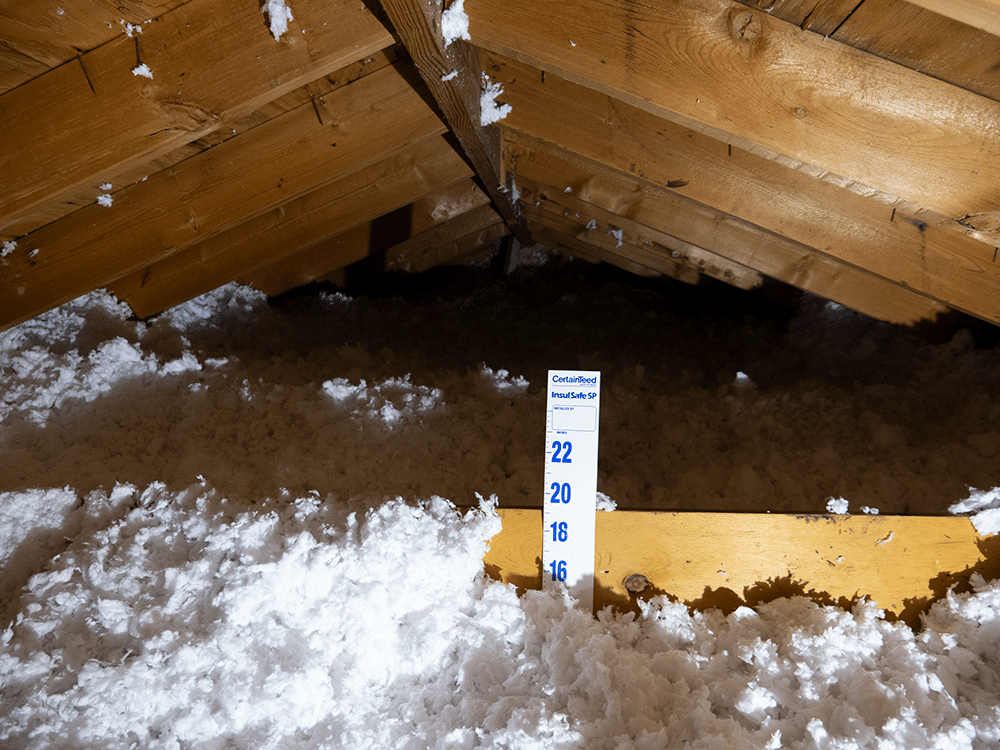When you think about home comfort in the Chicago area, your attic probably isn’t the first place that comes to mind. But here’s the truth: your attic insulation plays a huge role in regulating indoor temperature, lowering energy bills, and even protecting your roof.
With Chicago’s freezing winters and humid summers, having the right insulation is critical. Proper attic insulation can:
- Keep warm air inside during winter and out during summer
- Reduce heating and cooling costs year-round
- Protect against moisture issues that can damage your attic and roof
- Extend the lifespan of your HVAC system by reducing strain
But with so many insulation options, which one is right for your home? Below, we break down the seven most common types of attic insulation, their pros and cons, and what makes the most sense for Chicago homeowners.

1. Batt Insulation
Batt insulation (often fiberglass batts) is one of the most familiar insulation types. It comes in pre-cut rolls or sheets and is typically installed between joists or studs.
Pros:
- Affordable and widely available
- Easy installation for standard-sized attics
- Fire-resistant when fiberglass is used
Cons:
- Leaves gaps if not cut and fitted properly
- Can absorb moisture and encourage mold growth
- Fiberglass may irritate skin and lungs during installation
- Lower R-value per inch compared to newer materials
2. Blown-In (Loose-Fill) Insulation
Blown-in insulation, made of cellulose, fiberglass, or mineral wool, is applied with a blowing machine that evenly spreads material across the attic floor.
Pros:
- Great coverage, especially for irregular spaces
- Quick installation by professionals
- Excellent sound insulation
- Cellulose options often made from recycled materials
Cons:
- Can settle over time, reducing effectiveness
- Cellulose may absorb moisture and develop mold
- Requires professional equipment and installation
- Installation can be messy
3. Spray Foam Insulation
Spray foam is a liquid that expands into foam, sealing every crack and crevice. It comes in two main forms: open-cell and closed-cell.
Pros:
- Extremely high R-value per inch
- Acts as both insulation and air barrier
- Closed-cell foam resists moisture and adds structural strength
- Seals air leaks completely
Cons:
- One of the most expensive options
- Must be installed by trained professionals
- Can off-gas during installation (ventilation required)
- Nearly impossible to remove once cured
4. Rigid Foam Board Insulation
Rigid foam panels (polystyrene, polyisocyanurate, or polyurethane) are cut and placed along attic surfaces.
Pros:
- High R-value and excellent thermal resistance
- Long-lasting and moisture-resistant
- Adds structural rigidity
- Easy to cut and install in straight sections
Cons:
- More expensive than fiberglass
- Not suited for irregular attic shapes
- Requires fire-resistant covering for safety
- Manufacturing has higher environmental impact
5. Reflective or Radiant Barrier Insulation
Radiant barriers are reflective materials (often aluminum foil) installed under roof decking to reflect heat away.
Pros:
- Very effective at reducing summer heat gain
- Lightweight and easy to install
- Helps lower cooling costs
- Safe and non-toxic
Cons:
- Limited benefit in Chicago winters (better for southern climates)
- Dust accumulation can reduce performance
- Does not provide thermal insulation — only heat reflection
Cotton (Denim) Insulation
Made from recycled denim, cotton insulation is an eco-friendly alternative.
Pros:
- Sustainable and non-toxic
- Easy and safe to handle
- Good soundproofing qualities
- Fire- and pest-resistant (treated with borates)
Cons:
- Higher cost compared to fiberglass
- Less available in local stores
- Lower R-value than foam products
- Can absorb moisture if not protected
7. Mineral Wool Insulation
Also known as rock wool, mineral wool is made from molten rock or industrial byproducts spun into fibers.
Pros:
- Naturally fire-resistant and non-combustible
- Excellent soundproofing
- Resists water absorption
- Provides a solid R-value per inch
Cons:
- Pricier than fiberglass
- Heavier and harder to install
- Not as readily available as cellulose or fiberglass
- Can create dust during installation
Choosing the Best Attic Insulation for Chicago Homes
With Chicago’s cold winters and humid summers, your attic insulation needs to perform year-round. Spray foam and blown-in cellulose are among the most popular options locally because they seal gaps and provide consistent coverage — which is key for energy savings.
At Perma-Seal, our team doesn’t just install insulation. We also perform air sealing and old insulation removal, ensuring your attic performs at its best and meets today’s energy efficiency standards.
Make Your Home More Comfortable Year-Round
If your Chicago home feels drafty in the winter or too hot in the summer, your attic insulation may be the problem. Contact Perma-Seal Basement Systems today for an inspection and learn which insulation type is best for your attic.
Call 800-421-7325 or click the button below to schedule an appointment.







